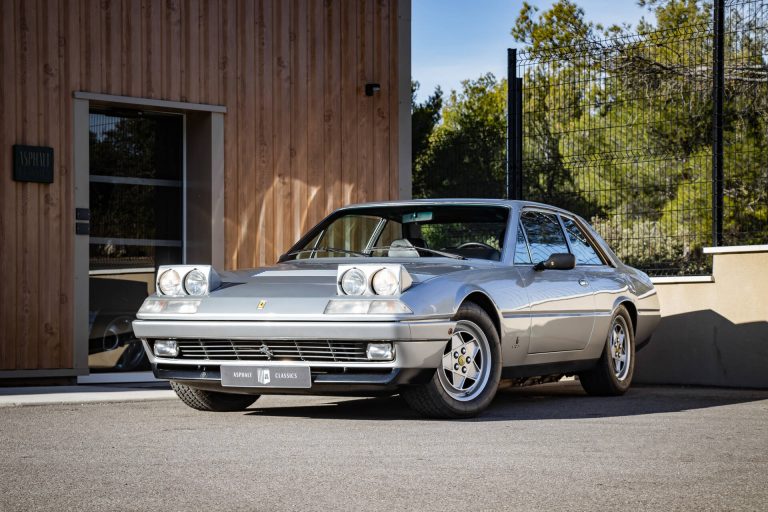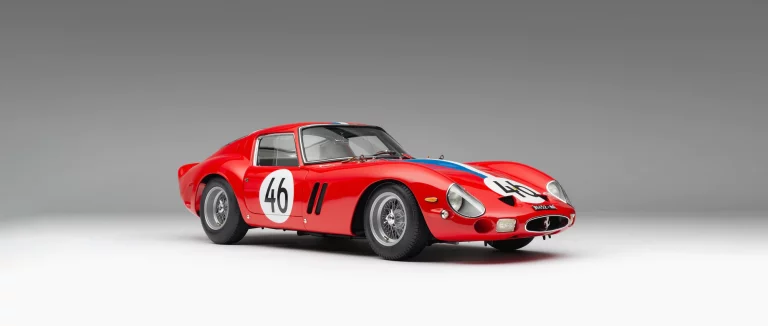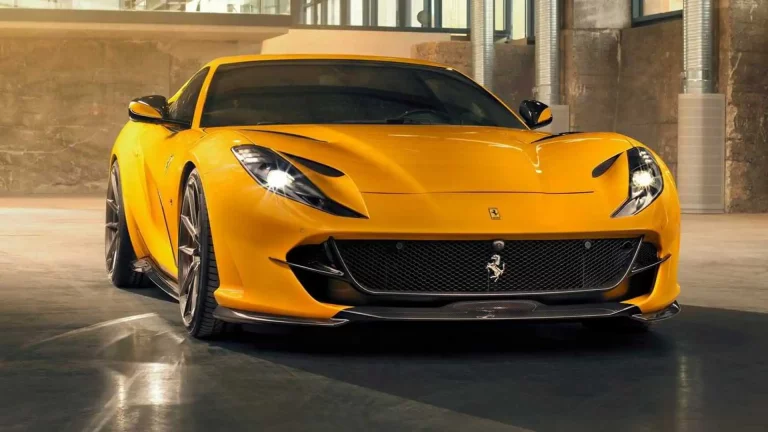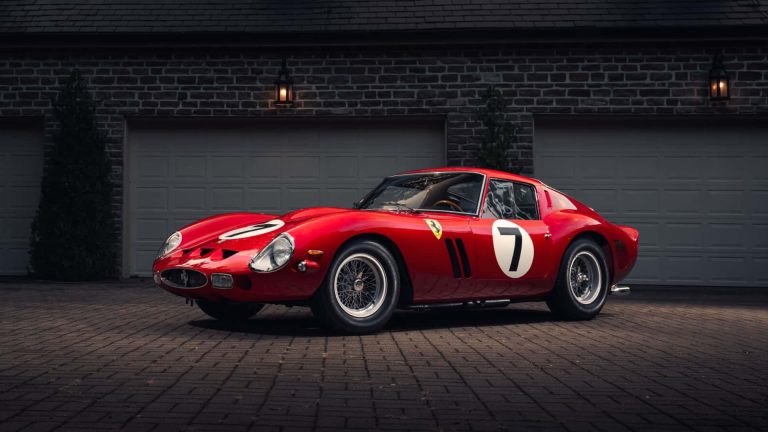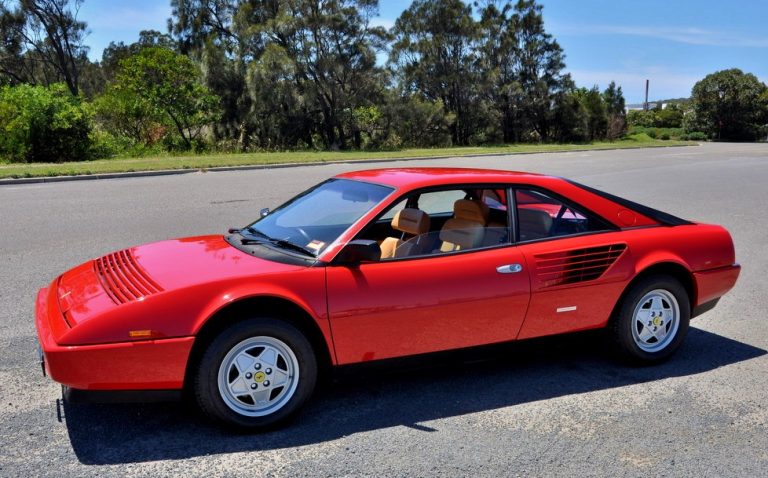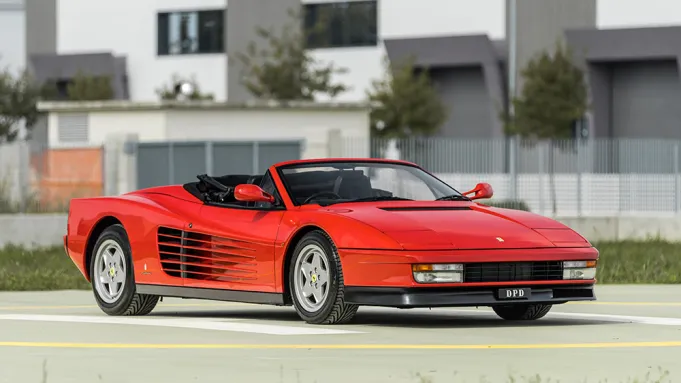Ferrari Daytona Price, Engine And Performance
Take a closer look at the Ferrari Daytona, a classic car that’s all about speed and style. With its cool design and strong V12 engine, the Daytona stands out as a top performer. In this review, we’ll see why this Ferrari is so legendary, from its stunning appearance to its impressive speed. Get ready to find out what makes the Daytona a true icon in the world of sports cars.
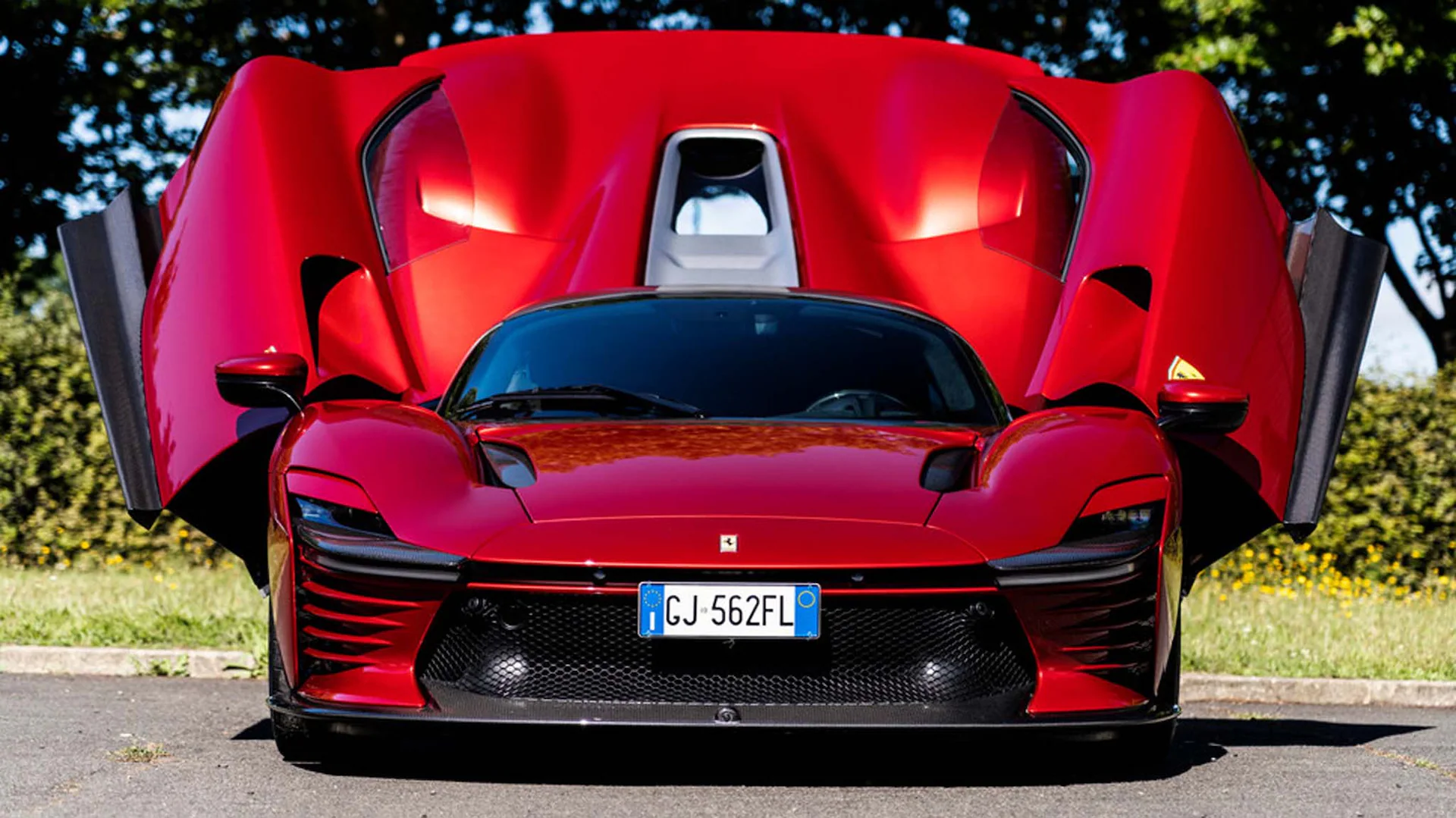
A Complete Ferrari Daytona Review
The Ferrari Daytona, officially named the Ferrari 365 GTB/4, is an iconic grand tourer produced by Ferrari from 1968 to 1973. It was introduced at the Paris Auto Salon in 1968 to replace the 275 GTB/4 and quickly earned the “Daytona” nickname after Ferrari’s 1-2-3 finish in the 1967 24 Hours of Daytona. This classic Ferrari has since become one of the most revered and sought-after models among collectors. Here’s a detailed review of the Ferrari Daytona, exploring its design, performance, and more.
1. Design of Ferrari Daytona
The Daytona’s design is a masterful blend of form and function, crafted under the guidance of Leonardo Fioravanti at Pininfarina, and it has since become one of the most iconic and recognizable Ferrari models.
Exterior
The Daytona’s exterior design is characterized by its sharp, angular lines, giving it a distinctive and commanding presence. The car features a long, sloping hood that leads to a set-back cabin, creating a classic grand tourer silhouette that is both elegant and sporty. The front of the Daytona is dominated by a large grille and pop-up headlights, a novel feature at the time, which contribute to its aggressive front fascia. The car’s stance is wide and low, further accentuating its sporty appeal. Aerodynamics were carefully considered in the design, with features like the subtly integrated rear spoiler improving stability at high speeds without compromising the car’s sleek lines.
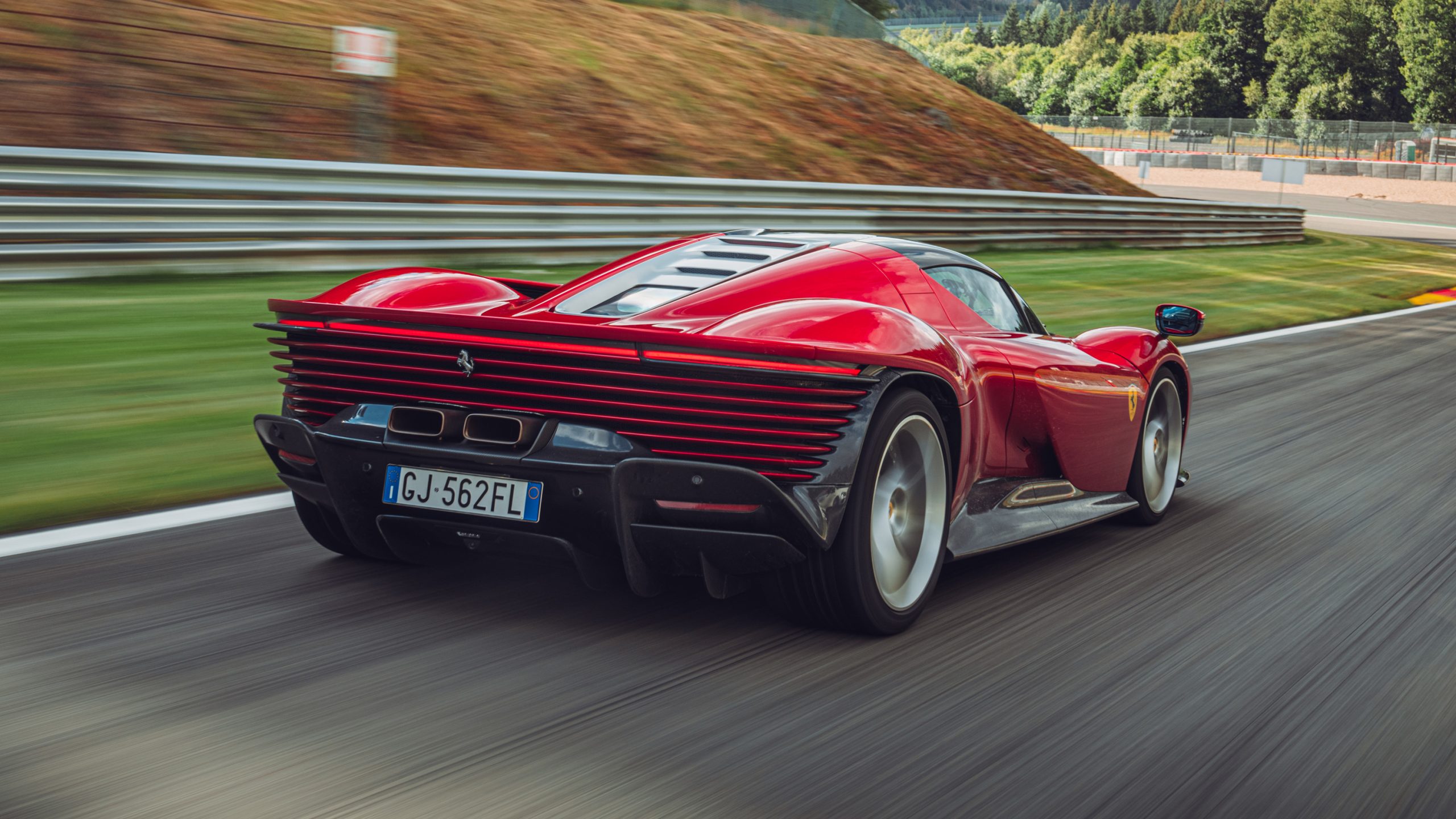
Interior
Inside, the Ferrari Daytona is as luxurious as it is outside, designed with comfort and grand touring capability in mind. The interior is spacious for a sports car of its era, offering generous room for both driver and passenger. The seats and interior surfaces are swathed in high-quality leather, complementing the car’s luxurious appeal. The dashboard is thoughtfully laid out, housing an array of gauges and dials that provide comprehensive feedback to the driver while maintaining an aesthetic of sophistication and elegance. The cabin’s design reflects Ferrari’s commitment to offering a driving experience that is not only exhilarating but also comfortable over long distances, making the Daytona a true grand tourer.
2. Ferrari Daytona Performance
The Ferrari Daytona, or the Ferrari 365 GTB/4, is not just an icon of automotive design but also a benchmark of performance. Its engineering and performance figures at the time of its release set a high standard, contributing to its legendary status. Let’s see the specifics of what makes the Daytona a performance powerhouse.
Engine
The heart of the Ferrari Daytona’s performance is its formidable 4.4-liter, V12 engine. This naturally aspirated powerplant is a marvel of engineering, capable of producing 352 horsepower. The engine features a double overhead camshaft (DOHC) configuration, with six Weber twin-choke carburetors feeding it, enhancing both its performance output and its characteristic engine note. This V12 was not just about power; it was also about delivering a smooth and engaging driving experience, emblematic of Ferrari’s engineering philosophy.
Acceleration
The Ferrari Daytona’s acceleration capabilities were extraordinary for its time, showcasing the potent combination of its V12 engine and the car’s aerodynamic design. It could sprint from 0 to 60 mph in just 5.4 seconds. This level of performance made the Daytona one of the quickest cars of its era, offering a thrilling experience behind the wheel.
Top Speed
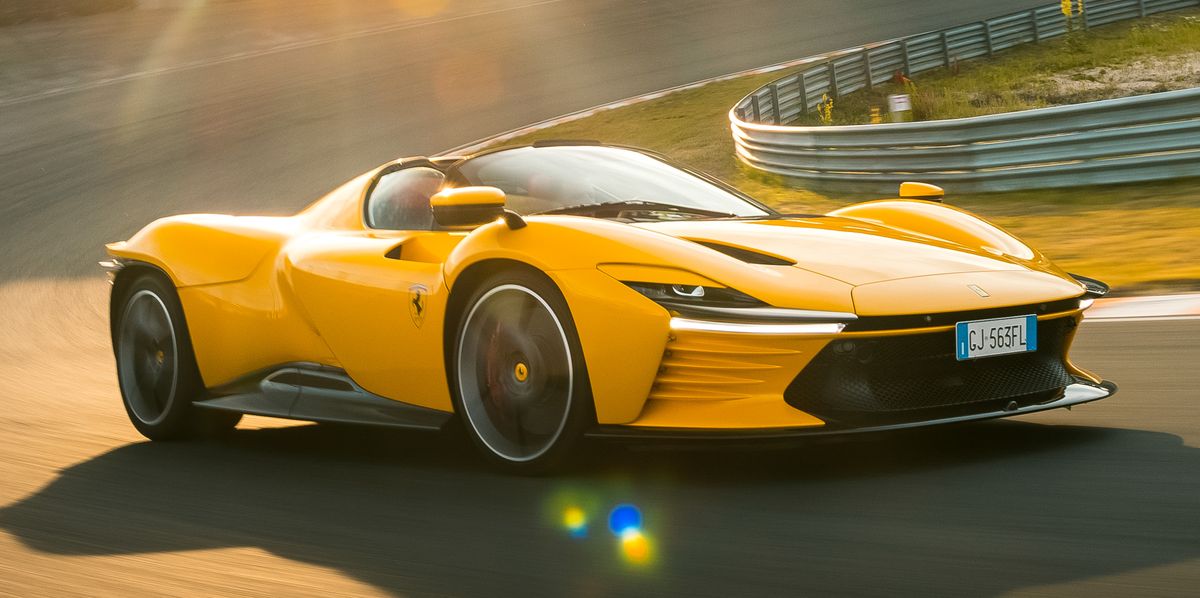
Equally impressive is the Daytona’s top speed, which stands at about 174 mph (280 km/h). This made it one of the fastest production cars in the world when it was released. Achieving such a top speed required not just a powerful engine, but also a carefully designed body that minimized drag and maximized stability at high speeds. The Daytona’s ability to reach such velocities with the technology available at the time is a testament to Ferrari’s commitment to pushing the boundaries of performance.
3. Ferrari Daytona Price
The price of a Ferrari Daytona depends on whether you’re looking at a new or classic model:
New Ferrari Daytona SP3: This limited-production hypercar starts at a staggering $2,226,935. With all the possible customizations, the final price could be even higher.
Classic Ferrari Daytona (1969-1973): These are collector’s items and their price varies depending on factors like condition, mileage, and specific model year. The range can be significant:
- The lowest recorded sale price was $401,000 for a 1972 Ferrari 365 GTB/4 Daytona Berlinetta.
- On the other hand, the highest recorded sale was a whopping $3,635,000 for a 1972 Ferrari 365 GTB/4 Daytona Spider in March 2024.
- The average price of a Ferrari Daytona sits around $920,838.
4. Fuel Economy and Real-World MPG
While exact fuel economy figures for the Ferrari Daytona were not a major consideration at the time of its production, and detailed records are scarce, estimates suggest that the car would have achieved fuel consumption figures that reflect its performance-oriented nature. Owners and experts often cite figures in the range of 8 to 12 miles per gallon (mpg) under mixed driving conditions.

Real-World MPG
In real-world driving conditions, the Daytona’s fuel economy would be on the lower end of the spectrum for contemporary vehicles. Owners driving the Daytona today, often in a more conservative manner and primarily on highways or at car events, may experience slightly better fuel efficiency than in aggressive or city driving. Yet, it’s important to remember that the Daytona was engineered for performance, not fuel savings, making its fuel consumption figures high compared to modern vehicles.
5. Infotainment and Connectivity Features
While the classic Daytona didn’t boast advanced infotainment and connectivity features found in contemporary cars, it summed up the essence of a sports car in the 1960s and 1970s. This focus on driving pleasure and performance over technology made Daytona a timeless classic. Even in the television series ‘Miami Vice’, Daytona’s replica resonated so well with the audience that it had to be replaced later with two Ferrari-donated Testarossa models, the then-newest flagship models of the company.
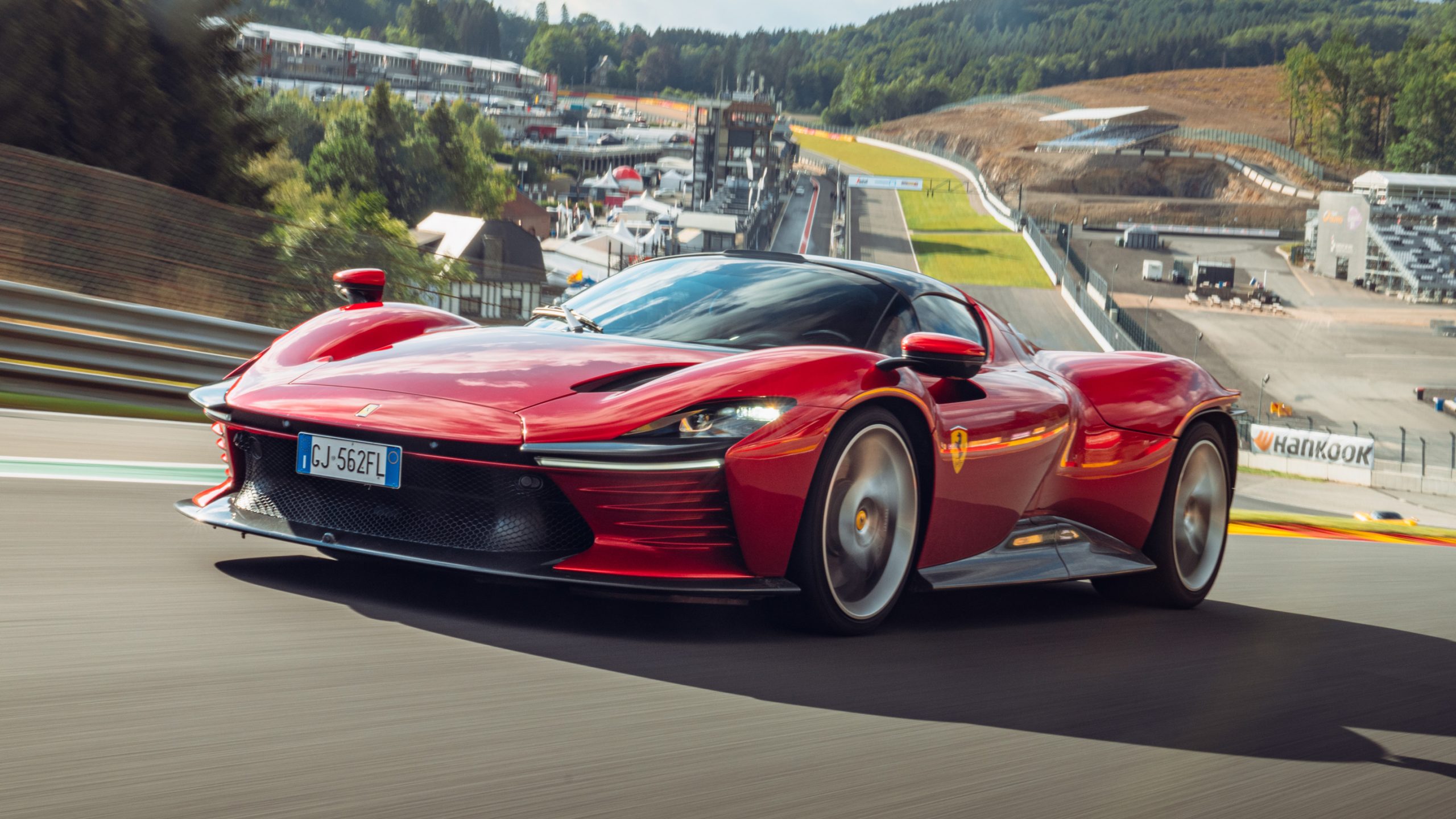
6. Safety and Driver-Assistance Features Implemented
Despite being a classic vehicle, the Daytona came equipped with several safety features. Its robust design included a sturdy frame to withstand high speeds, providing stability during fast maneuvers. Multiple braking mechanisms were part of Daytona’s safety apparatus, along with several other undisclosed safety features which, although not entirely known today, had to meet the stringent regulations of the time.
For those wondering about the airbags or the digital safety features common in today’s cars, remember that Daytona premiered on the world stage in the 60s before such enhancements became standard.
7. Ferrari Daytona Variants
There are two main Ferrari Daytonas to consider when discussing variants: the original 1968 Daytona and the modern Daytona SP3.
1968 Ferrari Daytona Variants
The classic Daytona was a two-seat grand tourer that replaced the 275 GTB/4. It came in two main body styles:
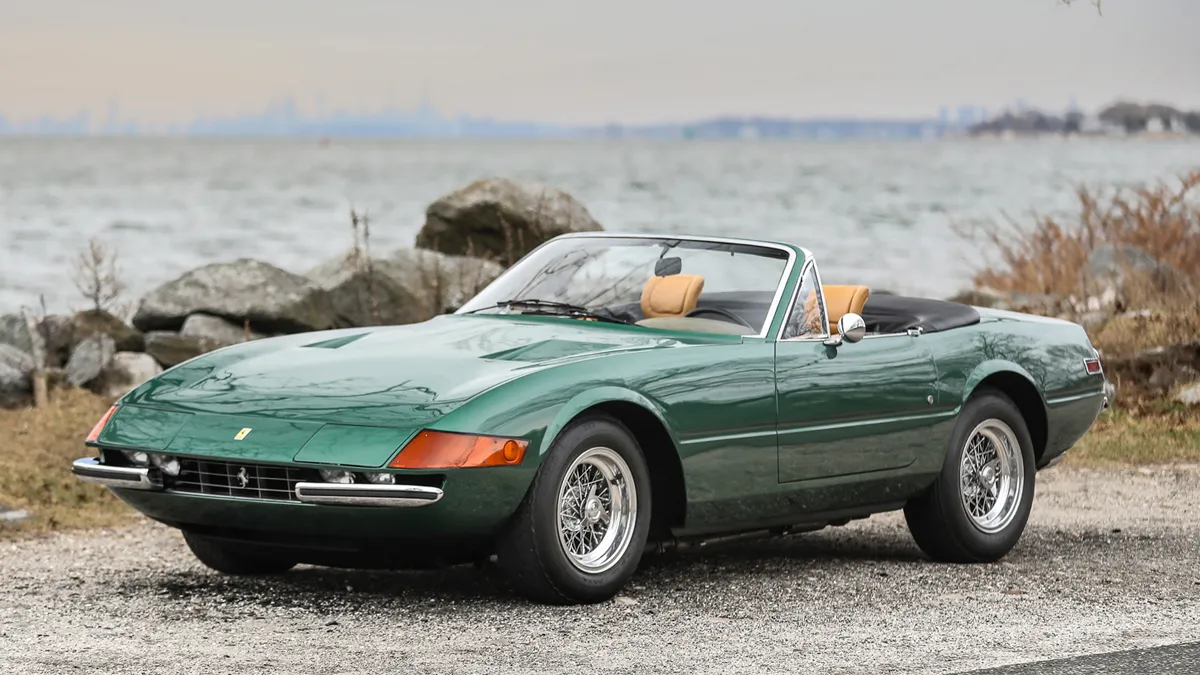
- 365 GTB/4 Berlinetta (coupe): This was the fixed-roof version of the Daytona and the more popular variant.
- 365 GTS/4 Spyder (convertible): This was the open-top version, and it’s even more valuable to collectors today.
Coachbuilt variants
There were also a handful of unique coachbuilt variants produced by independent design houses based on the Daytona chassis. These are incredibly rare and valuable cars. Here are two examples:
- Ferrari Daytona Shooting Brake by Luigi Chinetti: This one-off shooting brake was commissioned by Ferrari dealer Luigi Chinetti and designed by Drogo.
- Ferrari Daytona GTB/4 Competizione Speciale by Michelotti: This special edition Daytona was built by Michelotti for racing driver Jacques Swaters.
Modern Ferrari Daytona SP3 Variants (2024)
The Daytona SP3 is a limited-production homage to the original car, but it only comes in one body style:
- Ferrari Daytona SP3 (Berlinetta): This is a closed-cockpit, mid-engined sports car with a butterfly door design, wraparound windshield, and a large rear wing.
Frequently Asked Questions
What is the significance of the Ferrari 365 Daytona?
The Ferrari 365 Daytona holds historical and cultural significance as it balances the exclusivity of a high-performance vehicle and efficient fuel consumption. It continues to impress with its power-packed yet practical V12 engines, unique safety features, and intelligent design.
How does the Ferrari 365 Daytona perform in terms of fuel economy?
The Ferrari 365 Daytona delivers an impressive fuel allocation, with 12 MPG in city environments and 16 MPG on highways. This balance between power and efficiency makes it an ideal choice for high-performance car enthusiasts.
What should one consider before buying a Ferrari Daytona?
Before purchasing a Ferrari Daytona, it’s important to know its ownership history and consider the maintenance costs. These factors, coupled with the current market scenario, can significantly influence the pricing and value of the Daytona.
How does Ferrari Daytona’s design feature contribute to its performance?
The Daytona’s intelligent design features focus on optimizing fuel allocation, which contributes significantly to its performance. Despite being a high-performance vehicle, the Daytona is notably efficient and practical.

Hi! I’m Larry Gibbs, studying mechanical engineering with a focus on cars. I really love Ferraris and write blog posts about the latest car stuff. When not studying or blogging, I’m usually on a road trip exploring new places. I also enjoy playing football and watching movies. Life’s an adventure, and I’m all about enjoying the ride!

